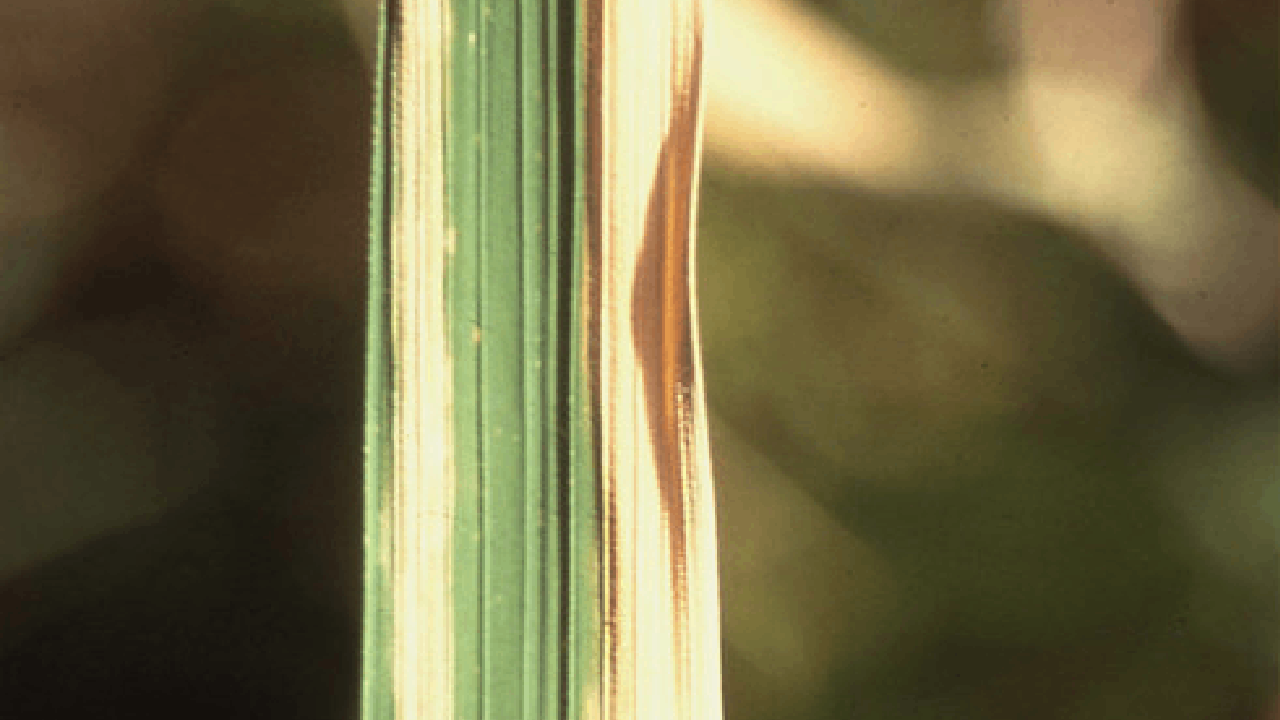
The term "paddy" originates from the Malay/Indonesian word padi, meaning "rice plant," which is derived from Proto-Austronesian pajay. Paddy is a staple crop in India, with a production volume exceeding 135 million metric tons in the fiscal year 2023. Key rice-growing regions include Assam, West Bengal, and the coastal areas of Odisha, Andhra Pradesh, Telangana, Tamil Nadu, Kerala, and Maharashtra. Recently, Punjab and Haryana have also become significant producers. But, Paddy is vulnerable to various diseases that can impact yield and quality, making early identification and effective management crucial for safeguarding the crop. Three major disease are mentioned below:
Blast Disease
Caused by: Magnaporthe oryzae
Symptoms:
-
Leaf Blast: Brown, eye-shaped or boat-like spots on the leaves. Initially, these spots are light brown and develop a characteristic ash-grey color with a thin central stripe. As the disease progresses, lesions expand and merge, causing the leaves to become scorched and dry up.
-
Neck Blast: This severe form of the disease affects the panicle. Lesions appear at the base of the panicle, turning brown to black, which causes the panicle to break off, leading to complete grain loss. The infection at the lower stalk of the panicle can cause the grains to be absent, and the flowers and neck may turn black.

Prevention:
-
Seed Treatment: Treat seeds with Pseudomonas fluorescens at a rate of 10 grams per kilogram. This biological treatment helps to reduce the fungal load on seeds before sowing.
-
Fungicide Application: Spray the crop with 2 grams of Carbendazim 50 WP or a combination of Tebuconazole and Trifloxystrobin (Nativo 75 WG) at 5 grams per liter of water. These fungicides are effective in controlling the blast fungus.
-
Disease-Resistant Varieties: Plant resistant varieties such as Pusa Basmati 1609, Pusa Basmati 1885, Pusa 1612, and Pusa Basmati 1637. These varieties have shown better resistance to blast disease.
-
Cultural Practices: Avoid excessive nitrogen fertilization, which can exacerbate disease. Implement crop hygiene by maintaining clean irrigation canals and rotating crops to disrupt the disease cycle.
Bakanae Disease
Caused by: Fusarium fujikuroi
Symptoms:
-
Early Symptoms: Bakanae disease often begins with weak, chlorotic leaves that exhibit abnormal elongation. Affected plants may show signs of crown rot, leading to stunted growth.
-
Mature Plants: As the crop nears maturity, infected plants develop long, light green tassels and flag leaves that protrude above the normal crop level. The number of is typically reduced, and leaves dry up progressively from bottom to top. In some cases, plants may mature with empty ears, and white or pink fungal web growth might be visible on the lower parts.

Prevention:
-
Seed Selection: Use clean, disease-free seeds from reliable sources. Ensure seeds are free from contamination to reduce the risk of disease transmission.
-
Seed Treatment: Soak seeds in a 10% saline solution to separate light-weight and infected seeds. Additionally, treat seeds with Carbendazim 50 WP at 2 grams per kilogram to kill any residual fungus.
-
Field Management: Maintain field cleanliness by removing paddy residue and weeds after harvesting. Treat seedlings with Carbendazim (Bavistin 50 WP) at a rate of 1 gram per liter of water for 12 hours before transplantation.
Bacterial Leaf Blight
Caused by: Xanthomonas oryzae
Symptoms:
-
Leaf Blight Stage: Water-soaked lesions appear on the upper ends of the leaves, turning yellow or straw-colored. These lesions start from the leaf tips and spread downwards. Severe infections can cause the entire plant to dry out, including the sheath, stem, and other parts.
-
Kresek Stage: This stage is visible shortly after planting and causes leaves to curl, turn yellow or brown, and stems to dry up. In severe cases, plants may die.

Prevention:
-
Seed Treatment: Treat seeds with Pseudomonas fluorescens (10 grams per kilogram) before sowing. This treatment helps to reduce bacterial load on seeds.
-
Transplanting Treatment: Dip the roots of seedlings in a solution of Pseudomonas fluorescens (1 kilogram per acre) for one hour before transplanting.
-
Fungicide Application: Spray the crop with streptocycline (100 ppm) at 30 to 40 days after transplantation. Additionally, apply copper oxychloride at 5 grams per liter of water at 10-12 day intervals to control bacterial spread.
-
Disease-Resistant Varieties: Use varieties such as improved Pusa Basmati 1, Pusa Basmati 1718, and Pusa Basmati 1728, which are known to have better resistance to bacterial leaf blight.
-
Water Management: Avoid prolonged waterlogging, which can exacerbate the disease. Ensure proper drainage and use balanced fertilizers to maintain plant health.
For further guidance, farmers should consult local agricultural extension services or crop management experts.
















